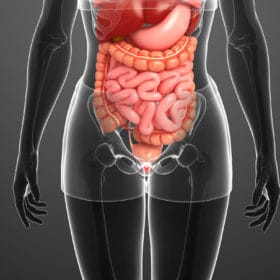If you suddenly feel tired and listless, but there is actually no obvious reason for this, it may be due to an imbalance in your Acid-base balance lies. Find out what this household is all about and how you can do something about it in the following article.
What is the acid-base balance?
The so-called acid-base balance is an elementary component of the human organism, which represents the relationship between alkaline and acid-forming metabolic processes. This ratio is measured using the pH value, just like in chemistry lessons at school. A quick refresher: the pH scale ranges from 0 to 14, with 0 being extremely acidic and 14 being extremely alkaline. The value 7 is considered pH-neutral. The fact that there are different metabolic processes in our body with different pH values is demonstrated, for example, by our digestive tract. If the stomach is very acidic thanks to the hydrochloric acid it contains, which dissolves our food, with a pH value between 0 (on an empty stomach) and 4 (when the stomach is completely full), the secretion of the pancreas is already slightly alkaline with a pH value of 8.
How can you measure the acid-base ratio in the body?
As the acid-base balance affects various metabolic processes, it makes sense to determine this value. In practice, the easiest way to do this is to get pH test strips from the pharmacy. You use these seven to eight times a day to moisten them with your urine. Starting with the first time immediately after getting up, the pH value should move as close as possible to the pH-neutral value of 7 as the day progresses. Alternatively, you can also have your body's pH value determined by a doctor as part of a blood gas analysis.
How do acids form in our body?
In a healthy person, the pH value fluctuates between 7.36 and 7.44. If the value is lower, this is known as hyperacidity. This acidosis is caused by acids that accumulate in the body as waste products of metabolic processes. As a rule, the acids produced by the digestion of certain foods, for example, can be neutralized by existing bases so that the acid-base balance remains balanced. These bases come from the thigh bones, the lungs, the liver and the kidneys, among others. If the acid load increases extremely due to a predominantly acidic diet, for example, the alkaline reserve is no longer able to keep the acid-base balance within the 7.36-7.44 zone. Your body is considered to be significantly over-acidified from a pH value of 6.5.
Other reasons for acidosis
In addition to an unbalanced diet, there are other reasons that can cause the pH value to slip into the acidic range. One important factor, for example, is stress. People who rush back and forth between appointments, family, work and other commitments promote the release of stress hormones, which leads to an increased formation of acids in the body. Other causes include harmful environmental influences such as particulate matter and environmental toxins, smoking, excessive alcohol consumption, a lack of alkaline minerals such as magnesium, potassium and calcium and the regular intake of certain medications. In addition, athletes who train intensively also contribute to hyperacidity in the body.
How does hyperacidity manifest itself?
Acidosis of the body is expressed by numerous symptoms that you can use as indicators. On the psychological side, these are mainly nervousness, tiredness, listlessness and sometimes severe mood swings. On the physical side, the imbalance in the acid-base balance can lead to sleep disorders, headaches, strokes, heart attacks or high blood pressure. If the acidity is not balanced by bases in the long term, the removal of minerals from the bones can lead to degenerative diseases such as arthrosis, rheumatism and osteoporosis.
Does an imbalance in the acid-base balance have an effect on training?
Acidification of your body has a strong impact on your training, which increases the recovery time, among other things. If you ignore the warning signs mentioned above, you will not only have to reckon with a considerable drop in performance, but will also find it much easier to overtrain. This often leads to muscular complaints such as cramps, tension and stiffness. This is of course counterproductive and should be avoided at all costs.
Measures against hyperacidity
A direct measure that has proven to be particularly effective against acidosis caused by training is the intake of mineral supplements that replenish the alkaline reserve so that the acids produced in the body can be buffered. You should also make sure that you keep your consumption of alkaline and acid-forming foods in balance.
The following section gives you a brief overview of typical acidic, alkaline and neutral foods.
Acid-forming foods: Fish, eggs, meat, quark, coffee, nuts, carbonated drinks, alcohol, white flour products
Alkalizing foods: Pulses, olives, almonds, dried fruit, vegetables, fruit, potatoes, still water Neutral foods: oat flakes, yoghurt, olive oil, spelt, honey, wholegrain products, sunflower seeds, butter
Conclusion
So you can see how important a balanced acid-base balance is for your well-being and the optimal functioning of your body. So make sure that you use your diet to counteract acidosis through high protein consumption.












